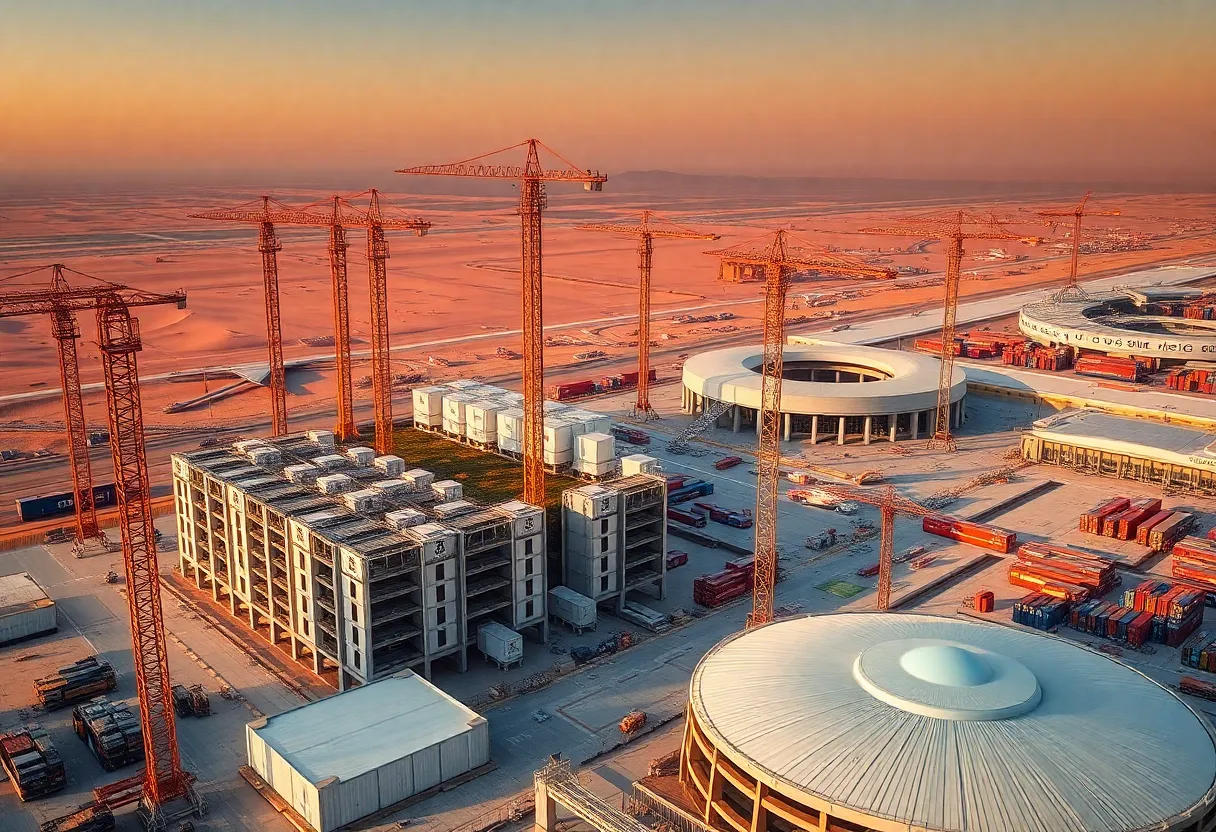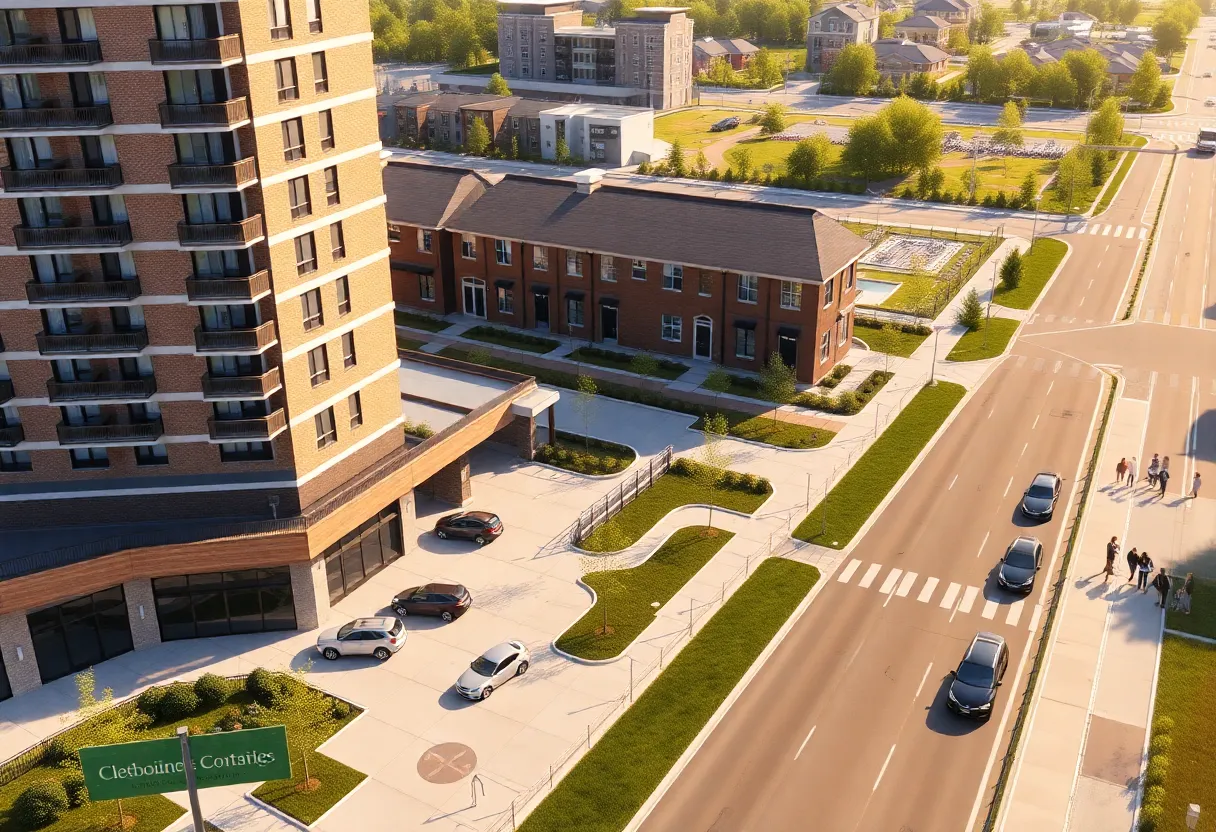Middle East, September 3, 2025
News Summary
The Middle East construction market reached USD 386.09 billion and is forecast to grow toward roughly USD 713 billion, propelled by large state plans, giga-projects and rapid urbanisation. Saudi Arabia and the UAE account for the largest market shares, while event-driven deadlines and tourism targets intensify demand for airports, hotels and stadiums. Expansion faces headwinds from foreign-worker caps, supply-chain disruptions, limited local materials capacity and climate-driven technical risks. Developers are scaling modular prefabrication, digital tools like BIM and PPP financing to meet fixed deadlines. Firms that combine modular methods, digital workflows and deeper local supply ties are best positioned to win work.
Middle East construction market set to nearly double by 2033 as giga‑projects and national visions drive demand
Updated: September 2025
Quick take
The Middle East construction market reached USD 386.09 billion in 2024 and is forecast to grow to USD 712.80 billion by 2033, rising at a compound annual growth rate of 7.05% (2025–2033). The expansion is being driven by large state programs, urban population growth, tourism and major event planning, while labor shortages, supply‑chain volatility and climate pressures limit faster gains.
Topline numbers and timeline
The market is expected to reach USD 413.31 billion in 2025, with a forecast window that has a base year of 2024 and runs from 2025 to 2033. The report covering the outlook includes country and regional breakdowns, sector splits, construction method analysis, and a competitive landscape review.
What’s driving the surge
Multiple national transformation blueprints are pumping capital into non‑oil infrastructure. Prominent strategies cited include long‑term vision plans that prioritize urban growth, tourism and smart cities. These programs are supporting massive allocations for projects and public spending:
- Saudi Arabia has earmarked more than USD 1.5 trillion for giga‑projects, with NEOM alone valued at about USD 500 billion across 26,500 km² and including The Line, a planned 170‑km linear city.
- Saudi government construction capital expenditure reached SAR 178 billion (USD 47.5 billion) in 2023, a 22% year‑on‑year increase.
- Urban housebuilding programs delivered results in 2023: over 300,000 housing units through a national housing initiative, and more than 700,000 housing units under construction nationwide.
Regional market split and leading countries
In 2024 Saudi Arabia led the Middle East construction market with 39.3% market share. The United Arab Emirates ranked second at 28.3% share. Dubai and Abu Dhabi both show strong public and private pipelines, while Gulf sovereign wealth funds continue to back large projects.
Major projects and event-driven demand
Public events, aviation and hospitality are central to near‑term demand. Saudi Arabia is preparing for multiple big events through the 2030s, which is behind stadium and transport schemes. Major airport projects include a large King Salman International Airport masterplan and ongoing phases at Dubai’s Al‑Maktoum International Airport. An Expo masterplan north of Riyadh has begun tendering initial works with construction costs estimated at USD 7–10 billion.
Construction methods, innovation and green rules
Modular and prefabricated construction is expanding. A large Saudi developer completed a 600‑unit complex in 18 months using modular units, about 40% faster than traditional methods. Industry groups estimate modular methods can cut on‑site labour by up to 60% and reduce waste by 35%. Meanwhile, environmental codes and certification schemes are pushing projects toward higher energy performance: thousands of buildings in the UAE are registered under local green rating systems and new national codes mandate energy efficiency for public projects.
Constraints that could slow growth
Several persistent hurdles threaten the pace of delivery:
- Labor shortages and policy limits: Caps on foreign workers and disruptions from traditional labour‑sending countries have affected hiring. A 30% cap on foreign workers per company introduced in 2023 affected more than 40% of construction firms in one major market, causing recruitment gaps and delays.
- Supply‑chain volatility: The region relies heavily on imported raw materials. A shipping crisis in 2022 delayed nearly 38% of shipments to some countries and extended lead times by an average of 45 days. Local manufacturing capacity remains limited, including only about a dozen integrated cement plants across the Gulf Cooperation Council.
- Climate and durability risks: Extreme heat, humidity and salt‑laden air accelerate material degradation and raise cooling loads, which account for nearly 70% of residential energy use in parts of the region. Climate models project more extreme heat days, creating long‑term maintenance and design challenges.
- Fiscal and financing gaps: Currency pressures, public debt constraints in some non‑GCC countries, and limited long‑term credit markets restrict private participation and increase reliance on state budgets.
Contractors, competition and industry trends
The market features national champions, large multinationals and specialized regional firms. Contractors are differentiating through digital tools such as Building Information Modeling and digital twins, off‑site construction, ESG compliance and strategic alliances. The sector is also witnessing consolidation as stronger firms acquire weaker players to boost capacity.
Equipment market and construction services
The wider construction equipment market in the Middle East and North Africa was valued at USD 11.04 billion in 2024 and is expected to grow to about USD 13.81 billion by 2030. Demand is being driven by urban expansion, mechanization, and large infrastructure work, though high purchase and maintenance costs remain a challenge.
Outlook
Despite a slowdown in new contract awards in early 2025, the region maintains a deep pipeline across aviation, hospitality, public infrastructure and PPPs. Project sponsors are prioritizing delivery of event‑linked and high‑impact works. If labour and logistics constraints ease and financing is mobilized, the forecast trajectory toward USD 712.80 billion by 2033 appears achievable, though risks remain uneven across countries.
Frequently Asked Questions
What size is the Middle East construction market today?
The market reached USD 386.09 billion in 2024 and is expected to grow to USD 413.31 billion in 2025.
How fast is the market expected to grow?
Forecast growth is projected at a 7.05% CAGR for 2025–2033, reaching USD 712.80 billion by 2033.
Which countries lead the market?
Saudi Arabia led in 2024 with roughly 39.3% market share, followed by the UAE at about 28.3%.
What are the main growth drivers?
Key drivers include national transformation plans, large giga‑projects, urban population growth, tourism and event preparation, and increased private participation through PPPs.
What are the main constraints?
Constraints include foreign labour caps and recruitment disruptions, supply‑chain delays and import reliance, climate‑related material degradation, and limited long‑term finance in some markets.
How is the industry responding?
Responses include greater use of modular construction, digital tools such as BIM and digital twins, local prefabrication hubs, sustainability rules, and strategic alliances to secure capacity and technology.
Key features at a glance
| Metric | Value / Note |
|---|---|
| Market size (2024) | USD 386.09 billion |
| Market projection (2033) | USD 712.80 billion |
| CAGR (2025–2033) | 7.05% |
| Top markets (2024) | Saudi Arabia (39.3%), UAE (28.3%) |
| Major drivers | National visions, giga‑projects, urban growth, events, PPPs |
| Main constraints | Labour caps, supply‑chain delays, climate risks, financing gaps |
| Construction trends | Modular/prefab, BIM/digital twins, ESG codes |
| Equipment market (MENA) | USD 11.04bn (2024); forecast USD 13.81bn by 2030 |
| Notable giga‑projects | NEOM, The Line, major airports, Expo masterplans, stadium programmes |
Deeper Dive: News & Info About This Topic
Additional Resources
- Market Data Forecast: Middle East Construction Market
- Wikipedia: Middle East construction market
- GlobeNewswire: Middle East & North Africa Construction Equipment Markets 2025-2030
- Google Search: Middle East construction equipment market 2025-2030
- World Construction Network: Middle East still offers large-scale construction opportunities
- Google Scholar: Middle East large-scale construction opportunities
- Hotel Business: LE — Middle East construction pipeline reaches record-high project count
- Encyclopedia Britannica: Middle East hotel development pipeline 2025
- CBNME: Optima OpenSpace bring 360° reality capture to Middle East projects
- Google News: 360 reality capture construction Middle East





